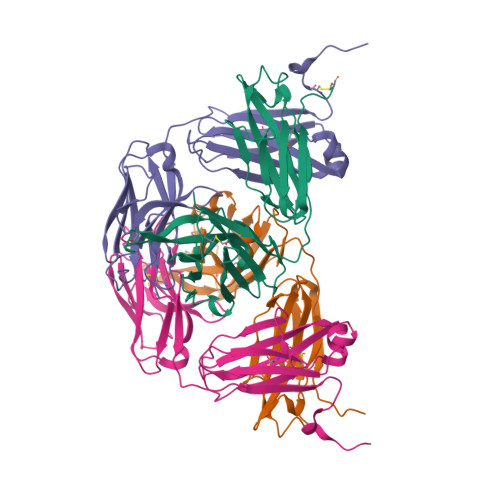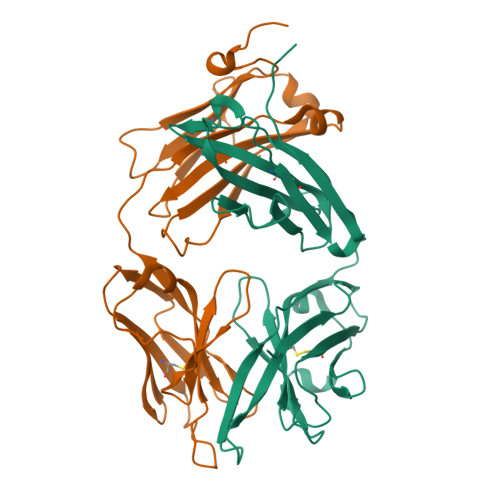Germline humanization of a murine Abeta antibody and crystal structure of the humanized recombinant Fab fragment.
Robert, R., Streltsov, V.A., Newman, J., Pearce, L.A., Wark, K.L., Dolezal, O.(2010) Protein Sci 19: 299-308
- PubMed: 20014445
- DOI: https://doi.org/10.1002/pro.312
- Primary Citation of Related Structures:
3AAZ - PubMed Abstract:
Alzheimer's disease is the most common form of dementia, affecting 26 million people worldwide. The Abeta peptide (39-43 amino acids) derived from the proteolytic cleavage of the amyloid precursor protein is one of the main constituents of amyloid plaques associated with disease pathogenesis and therefore a validated target for therapy. Recently, we characterized antibody fragments (Fab and scFvs) derived from the murine monoclonal antibody WO-2, which bind the immunodominant epitope ((3)EFRH(6)) in the Abeta peptide at the N-terminus. In vitro, these fragments are able to inhibit fibril formation, disaggregate preformed amyloid fibrils, and protect neuroblastoma cells against oligomer-mediated toxicity. In this study, we describe the humanization of WO-2 using complementary determining region loop grafting onto the human germline gene and the determination of the three-dimensional structure by X-ray crystallography. This humanized version retains a high affinity for the Abeta peptide and therefore is a potential candidate for passive immunotherapy of Alzheimer's disease.
Organizational Affiliation:
CSIRO Molecular and Health Technologies, 343 Royal Parade, Parkville, Victoria 3052, Australia. remy.robert@csiro.au




















